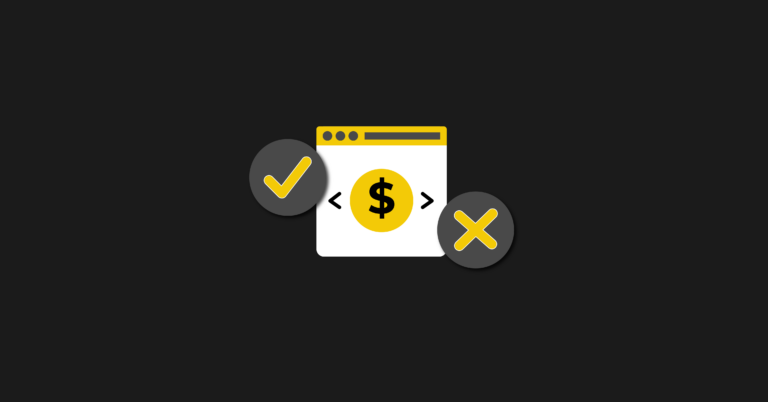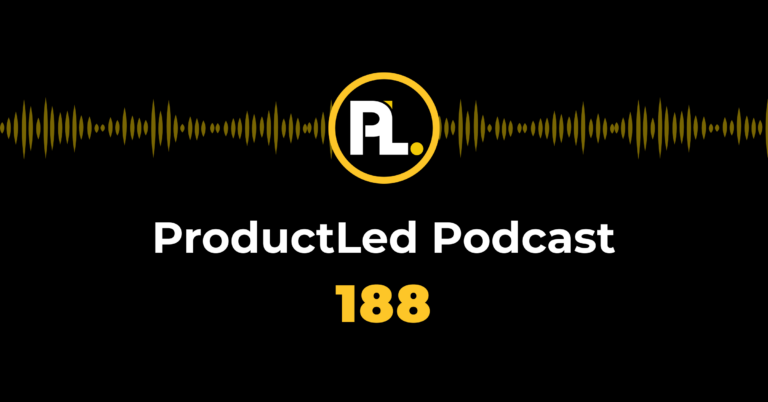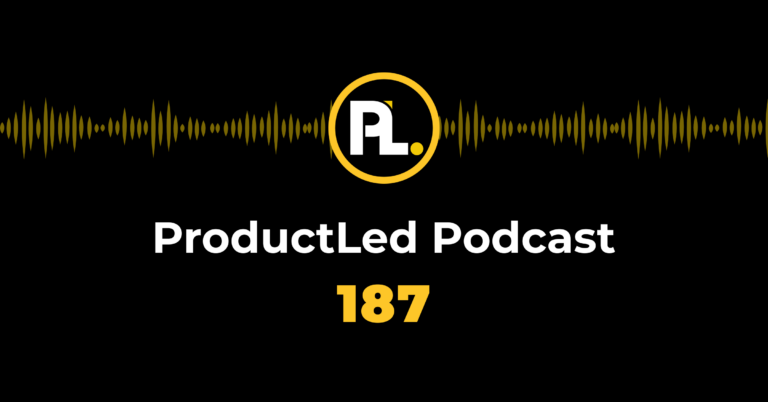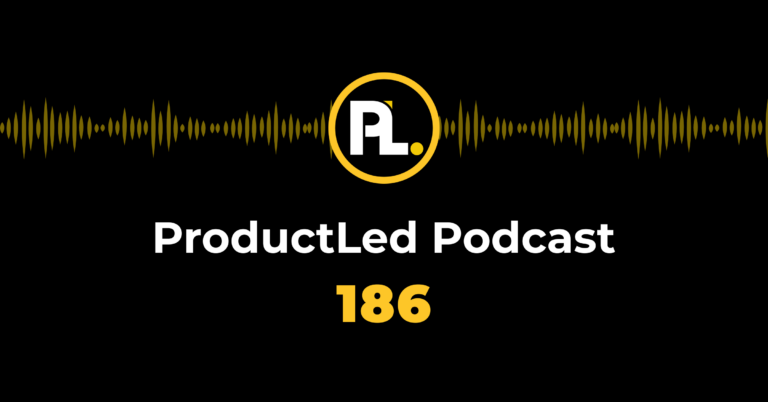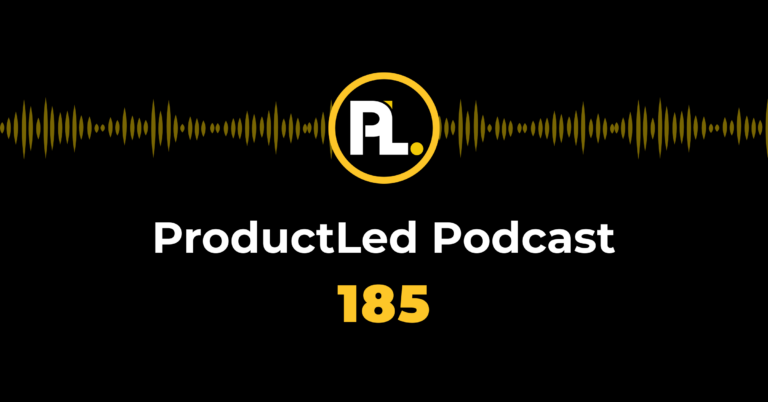You probably know what product-led growth is by now, but do you know all those little nitty gritty terms you need to know to be fluent in product-led speak?
Maybe you do -- but I bet there are at least a few people in your organization who could use a helping hand getting up to speed.
We've listed the ABCs of Product-Led Growth and SaaS terminology below to help you map out your product-led strategy and ensure your team is all on the same page.
Have fun diving into this glossary of terms – and if we missed any, leave your definitions in the comments below!
A
Ability debt: The price you pay every time your user fails to accomplish a key outcome in your product.
Activation rate: A measurement of the percentage of people who complete a certain action during onboarding.
Activation velocity: An illustration of how a cohort of users reaches a key onboarding milestone (Activation) over time.
Annual Contract Value (ACV): The average annualized revenue per customer contract. It excludes any one-time fees. (source)
Annual Run Rate Revenue: A yearly version of monthly recurring revenue.
Average revenue per user (ARPU): A measurement of the amount of money that a company can expect to generate from an individual customer. It’s calculated by dividing the total revenue of the business by its total number of users. (source)
Average Customer Life: The average amount of time between the first and last order date.
Average Selling Price: The average amount of money spent by a customer.
B
Best Judgment Pricing: When you and your team decide your price based on what you think would make a reasonable price.
BJ Fogg Behavior Model: A model that shows that three elements must converge at the same moment for a behavior to occur: Motivation, Ability, and a Prompt.
Blue Ocean Companies: Companies that access untapped market space and create demand, so they have the opportunity for highly profitable growth. In Blue Oceans, competition is irrelevant. Yes, imitators arise, but experience shows there is a wide window of opportunity to stay ahead of imitators.
Bottom-Up Selling: A normal approach in the consumer market. Take Facebook, Twitter, or Evernote: each created a product that can be adopted in minutes. Unlike the top-down selling strategy, where it might take months or years to close a sale (and another year to understand how to use the product), bottom-up selling strategies demand quick adoption and simplicity.
Bowling Alley Framework: An onboarding strategy that uses “bumpers” to help turn users into customers.
Brand Voice: The personality that a brand takes on in its communications.
Burn Rate: The rate at which a company loses money.
C
Cost-Plus Pricing: This works when you calculate the cost of selling and delivering the product, then add a profit margin on top.
Committed Monthly Recurring Revenue: The value of the recurring portion of subscription revenue.
Competitor-Based Pricing: When you benchmark your pricing off of your competitors.
Contextual Engagement: Engaging in a manner that allows you to provide more personalized and relevant communication in the future.
Conversational Bumpers: These work to educate users, bring them back into the application, and eventually upgrade their accounts.
Cookies: Pieces of text sent to your browser by a website you visit that allow the website to remember information about your visit.
Customer Acquisition Costs (CAC): The cost of convincing a potential customer to buy a product or service. (source)
Customer Churn Rate: A measure of the number of customers moving on from a company over a specific period.
Customer Engagement Touchpoint: A representation of actions during a customer’s buying journey.
Customer Experience: The experience provided by a brand to a customer, as well as the impression that an audience has of a brand.
Customer Journey: The experience a customer goes through when interacting with a brand.
Customer Lifecycle: The process a prospect takes from becoming aware of a product through buying and using the product.
Customer Lifetime Value (CLV): The total value of a customer to a business over the entire period of their relationship.
Customer Onboarding: The process of getting a new user ready to use your product.
Customer Satisfaction Metrics: Metrics that measure your customer satisfaction and customer service effectiveness.
Customer Retention Cost: The amount of money you spend to keep a customer buying from you.
Customer Success Manager: Responsible for supporting customers as they transition from prospects to paying users.
Customer Experience Optimization: The process of improving a customer’s journey throughout their lifecycle.
D
Daily Active Users to Monthly Active Users (DAU/MAU): The ratio of your daily active users over your monthly active users as a percentage.
Days to Break-Even: The number of days it will take for a company or product to reach the break-even point.
Deferred Revenue: The money received in advance for products or services to be performed in the future.
Differentiated growth: This requires you to do a specific job better than the competition and charge significantly more. This is not a one-size-fits-all model.
Disruptive growth: When you charge less for what many might consider an “inferior product.” Most people think this is a bad idea, but it’s not.
Dominant growth: When you can do something much better than your market and can charge significantly less.
E
Emotional Outcome: how customers want to feel or avoid feeling as a result of executing the core functional outcome.
Engagement Loop: A model for designing engaging products and services.
Escalation Rate: The rate of change in price for a product or service.
Expansion Rate: The rate at which a company's monthly recurring revenue grows.
F
First Party Data: Information a company collects directly from its customers and owns.
First Principles Thinking: The process of questioning every assumption you think you know about.
First-Run Onboarding Experience: The first time a user goes through your onboarding experience.
Free-to-Paid Conversion Rate: The percentage of users that convert to a paid account from a trial period.
Free Trial: A customer acquisition model that provides a partial or complete product to prospects free of charge for a limited time.
Freemium Model: A customer acquisition model that provides access to part of a software product to prospects free of charge, without a time limit.
Functional Outcome: the core tasks that customers want to get done.
G
Go-to-Market (GTM) Strategy: An action plan that specifies how a company will reach target customers and achieve a competitive advantage. (source)
Gross Churn Rate: The percentage of total monthly revenue lost due to customer cancellation.
Growth Hacking: The use of low resource, cost-effective marketing tactics to help grow and retain a user base.
I
Ideal Customer Profile (ICP): A profile of the type of company that would benefit most from your product.
Influencer Marketing: A type of social media marketing that uses product mentions and endorsements from influencers.
K
Key Performance Indicator (KPI): The indicators of progress toward an intended result.
L
Landing Page: A standalone web page created specifically for an advertising or marketing campaign.
Lifetime Value (LTV): Tells companies how much revenue they can expect one customer to generate over the course of the business relationship.
Loyalty Loop: A portrayal of how customers decide what they purchase and whether or not they stick with a brand.
M
Marketing Qualified Lead (MQL): A lead who has indicated an interest in what a brand has to offer based on marketing efforts or is otherwise more likely to become a customer than other leads.
MQL to SAL Conversion Rate: The percentage of marketing-qualified leads that convert to sales-qualified leads.
MRR Churn Rate: The monthly erosion of your monthly recurring revenue.
MRR Expansion Rate: The rate at which a brand’s expansion monthly recurring revenue grows month over month.
N
Net MRR Churn: The measure of lost revenue month over month.
Net Promoter Score: A measurement of customer experience and prediction of business growth.
Net MRR Churn: The net percentage of total MRR lost from existing customers during a specified period.
O
Omnichannel Approach: An approach to sales that seeks to provide customers with a seamless shopping experience regardless of if they’re using a computer, mobile device, or in person.
P
Personalized Customer Experience: The delivery of personalized messaging, offers, and products on an individual basis.
PQL-To-Customer Rate: The percentage of new signups that reach PQL status in a specified time period.
Product Adoption: The time at which a user begins to use a product.
Product-Led Growth is a go-to-market strategy that relies on using your product as the main vehicle to acquire, activate, and retain customers.
Product Qualified Lead (PQL): A lead who has experienced meaningful value using your product through a free trial or freemium model.
Product Lifecycle: The process a product goes through from inception until it declines in performance or is no longer available.
Product Manager: A business professional who is responsible for the development of products for an organization.
Product Operations: An operational function that optimizes product, engineering, and customer success.
R
Red Ocean Companies: These companies try to outperform their rivals to grab a more significant share of existing demand. As the market space gets crowded, prospects for profits and growth reduce. Products become commodities, and cut-throat competition turns the bloody ocean red.
Renewal Bookings: The portion of bookings that can be directly attributed to existing contracts.
Renewal Rate: The percentage at which customers renew their subscriptions with a company.
Retention Metrics: Factors used to measure the likelihood of retaining and attracting customers.
Retention Rate: The percentage of users who continue using a product or service over a specified period of time.
Revenue Backlog: The value of revenue due from a subscription that has yet to be completely fulfilled.
Revenue Churn: The percentage of money up for renewal that a company loses over a specified period.
Revenue Per Employee (RPE): A measurement of the average revenue generated by each employee of a company.
Revenue Recognition: An accounting principle that identifies the conditions in which revenue is recognized. It also outlines how to account for said revenue.
Rule of Forty (RO40): The idea that a software company's combined growth rate and profit margin should exceed 40 percent.
S
SaaS: Also known as software as a service, it’s a way to deliver applications over the internet.
Sales-Led GTM: When you rely on your sales team to close every single deal in your pipeline. You have no self-service offering.
Sales Pipeline: A visual representation of sales prospects and where they are in the buying process.
Sales Qualified Lead (SQL): A prospective customer that is ready to talk to a sales team. Typically, this lead has expressed enough interest in your product or service, that they're ready to move into your sales process. Usually, they've been researched and vetted by your marketing department and then handed off to your sales team.
Search Engine Optimization: The process of improving your website to increase visibility when people search for related keywords.
Service Level Agreement: A contract between a provider and its customers that outlines what service or product will be provided.
Serviceable Available Market: The portion of the total addressable market that can be reached.
Serviceable Obtainable Market: An estimate of the portion of revenue within a product segment that a company can reach.
Social Outcome: how customers want to be perceived by others by using your product.
T
Third-Party Data: Data that is purchased from outside sources.
Time to Value (TTV): A measurement of the time it takes from when a customer purchases a product to when they start receiving value.
Top-Down Selling: When your sales team targets key decision-makers and executives. Typically, these deals include large product rollouts throughout an entire business.
Total Addressable Market (TAM): The overall revenue opportunity available or foreseen for a specific product or service, taking into account the future expansion scenarios. (source)
U
UCD Framework: It stands for Understand, Communicate, and Deliver your value. Each element is a pillar in building a successful product-led foundation.
Unified Customer Profile: A comprehensive view of a customer’s data.
User Engagement: A measurement of whether a user finds value in a product or service.
User Intent: The goal or intention of an individual conducting an online search.
User Journey Map: A diagram that illustrates the user flow beginning with initial contact through purchase.
User Retention: The continued use of a product by your customers.
V
Value-Based Pricing: This bases your price on the value you provide. You determine this by taking into account how prospects value your product.
Value Gap: If you fail to deliver, your user experiences a nasty value gap.
Value Metric: A value metric is the way you measure value exchange in your product.
Velocity Metrics: A group of metrics that measures the amount of work a team can handle.
Virtual Private Cloud: A private cloud computing environment that lives within a public cloud.
Virtual Private Network: An encrypted connection over the internet from a device to a network.
Visitor-to-Signup Rate: A metric that indicates the number of visitors to a website that converts into sign-ups.
Z
Zero-Party Data: Zero-party data is data a customer intentionally and proactively shares with a brand.
Now, It's Your Turn
You’ve reviewed our list of product-led growth and SaaS terminology definitions. Now, we want to hear from you. Are there any other core terms that you think should make this list? Share your suggestions (and definitions) in the comment section below.
And of course, if you’re ready to learn how product-led growth works, sign up for our free PLG fundamentals course.

